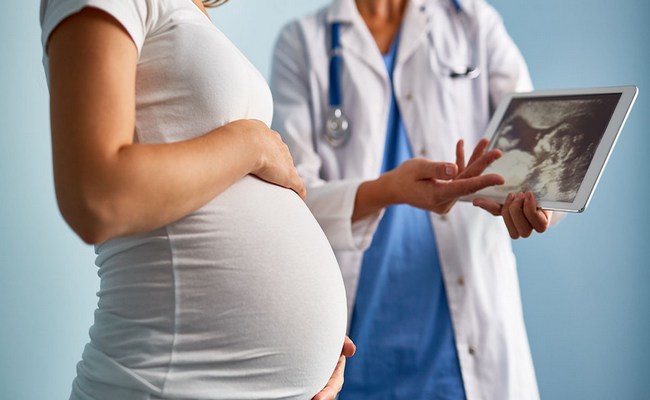Definition of High Risk Pregnancy or Mother:
High risk pregnancy is defined as one which is complicated by factor or factors that adversely affects the pregnancy outcome- maternal or prenatal or both.

Danger Signs of Pregnancy:
- Swelling of the feet,
- Convulsion,
- Blurring of vision,
- Per-vaginal bleeding (even in small amount),
- Per-vaginal discharge.
How to Identify High Risk Pregnancy?
High risk pregnancies or WHO (1978) criteria of high risk cases:
1. During pregnancy:
- Elderly primi (> 30 years of age),
- Short stature primi (< 140 cm),
- Threatened abortion & antepartum haemorrhage (ApH),
- Malpresentation,
- Pre-eclampsia & eclampsia,
- Anaemia,
- Elderly grand multiparas,
- Twins & polyhydramnios,
- Previous history of still birth, IUD, IUGR, manual removal of placenta,
- Prolong pregnancy,
- History of previous caesarean section & instrumental delivery,
- Pregnancy associated with medical disease.
2. During labour:
- Pre-mature rupture of membranes (PROM),
- Prolong labour,
- Hand, feet or cord prolapse,
- Placenta retained more than half an hour,
- Post-partum haemorrhage,
- Puerperal fever & sepsis.
How to Diagnose or Screen the Cases of High Risk Pregnancy?
The cases are assessed at the initial antenatal examination, preferably in the first trimester of pregnancy.
A. History taking:
1. Maternal age: Pregnancy < 17 years &>35 years.
2. Family history:
- Socio-economic condition: Poor socio-economic status has a high incidence of anaemia.
- IUG & preterm labour etc.
- Women who undertake long road journeys have a higher incidence of recurrent abortion or preterm labour.
- Family history of diabetes mellitus, hypertension, multiple pregnancy (maternal side), congenital anomalies.
3. Obstetric History:
- Two or more previous spontaneous / induced abortion.
- Previous still birth, neonatal death or birth of babies with congenital anomaly.
- Previous preterm or small for date or big baby (> 3kg) delivery.
- Grand multiparity.
- Previous caesarean section or hysterototomy.
- Pre-eclampsia or eclampsia.
- Third stage abnormalities: This has a particular tendency to recur.
- Previous infant with Rh-isoimmunisation or AB0 incompatibility.
4. History of medical diseases:
- Pulmonary disease (e.g. TB),
- Viral hepatitis,
- Cardiac disease,
- Renal disease,
- Thyroid disease,
- Psychiatric diseases,
- Epilepsy.
5. Past Surgical History:
- Myomectomy,
- Repair of vesico-vaginal fistula (VVF),
- Repair of complete perineal tear,
- Repair of stress incontinence.
B. Clinical examination:
1. General examination:
- Height: < 150cm,
- Weight: Overweight or underweight both are risk factor,
- High blood pressure,
- Anaemia,
- Cerdiac or pulmonery dlseases.
2. Per-abdominal examination:
- Genital prolapse
- Laceration or dilatation of the cervix.
- Associated tumor.
3. Follow up:
After initial visit, the high risk cases should be reassessed at each antenatal visit to detect any abnormality that might have arisen later; such as –
- Pre-eclampsia,
- Anaemia,
- Rh-isoimmunisation,
- High fever,
- Pyelonephritis,
- Haemorrhage or P/V bleeding,
- Diabetes mellitus,
- Large uterus,
- Lack of uterine growth,
- Post-maturity,
- Abnormal presentation,
- Twin pregnancy,
- History of teratogenic drug intake.

Maria Khatun Mona is a Founder and Editor of Nursing Exercise Blog. She is a Nursing and Midwifery Expert. Currently she is working as a Registered Nurse at Evercare Hospital, Dhaka, Bangladesh. She has great passion in writing different articles on Nursing and Midwifery. Mail her at “maria.mona023@gmail.com”
